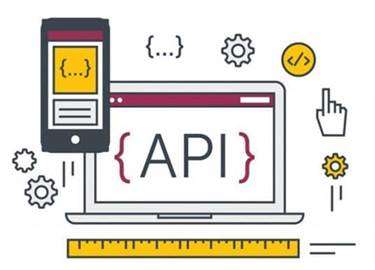Content
Time and Material is a balancing act sometimes, but it is still much less stressful and risky than, for example, fixed price’s consequences might be for everyone involved. At the moment, it is one of the most common types of contracts in the outsourcing business due to its convenient structure and relative flexibility. The T&M project can be easily adjusted to any changes without much of a fuss. Time and Material contracts are also particularly useful for longer-duration projects or engagements. Longer engagements can often evolve over time increasing the value of the flexible nature of this contracting strategy. T&M projects don’t add contingency—because if an unanticipated issue is encountered, it is shared by the team and a direction is determined collaboratively with the client.

Due to its flexibility, the time and material model relies on small milestones, so the final deadline remains unclear as well. You have complete control over the budget and the timeframes and can change the scope and the priorities in order to stay on track. Each of them offers a number of unique benefits when applied to a specific type of project. However, there are also pitfalls in each case that you should be aware of.
Minimum Viable Product Or Minimum Lovable Product? What Does It All Mean?
We look at how creating an implementation blueprint can build a solid foundation for your migration. So you might have an idea that has the potential to change the world, but the world changes while you can’t change the project’s scope to adapt. However, that doesn’t mean that the client must be present at every meeting every time no matter what. This responsibility lies on the shoulders of project managers who keep the client in the know about the undergoing of the projects and presents the results at a specific schedule.
We have ample experience in realizing projects using both models and know all the potential risks to avoid. Time & Materials brings a massive impact on the project’s timeframe. By using this model, you avoid the bidding process, which is part of the Fixed Price. This saves a lot of time and allows teams to start working on your project immediately.

When working with any contractor, ensure that they’re licensed by the Contractors State License Board and that the work they’re doing is within the scope of that license. Working with unlicensed contractors opens up liabilities that can impact the project and even the whole organization. This is also true for business licenses or business tax registration if required in the jurisdiction the project takes place in. That’s why if the timeline is going to change or you need to adjust the project to your current needs, only this pricing approach will give you the freedom to do it. The fixed hourly or daily cost of each specialist hired for the project.
T&m Approach In Action
How can you optimize the time & material pricing model to get maximum results from your investments? During the planning phase of any software development project, the main idea is usually clearly formed, and the project scope and allocated budget. However, even less experienced marketers know that predictions are, after all, just approximations of reality. Our experience https://globalcloudteam.com/ with fixed-price projects reveals needless discussions between our clients and us. Every time an idea for an improvement comes on the table, it passes down as a missed opportunity since anything outside the already contracted requirements is an outstanding issue. With T&M, the development team’s energy and the clients are channeled into meaningful tasks.
Customer success storiesGet to know our approach to partnership and collaboration through our customer success stories. When operating with well-specified requirements, a fixed budget, and prearranged deadlines, there won’t be any surprises waiting for you. For example, parties agree on the main list of tasks every 2-4 weeks, and optionally, they have the right to make minor adjustments through email or task-manager.
Fixed Cost Vs Time And Materials: Summary
Since priorities can more easily change during a T&M project, projects can begin more quickly than with a fixed fee SOW. Contracts do not need to be so tightly defined at their onset since there is room to adapt to new information. If you have basic requirements to get started, some of the final pieces can be discovered along the way—all resulting in a better end product than if you were tied to the original project requirements. We often think of contracts in terms of dollars and cents, but not all contracts are created equal. Being strictly limited in time and budget within a fixed-price model, the development team often has to deal with numerous challenges not directly targeted at the final product quality.
Estimates of the scope of work and project timelines are simply approximations. During T&M, adjustments are frequently made, and the most important thing is the outcome and quality, not the price and terms. However, it is not the best option when speaking of software development.

Is it better to start with simpler or more complex things? In the course of development, you can easily make changes, change the scope of work and use flexible development methodologies . The list of tasks to be completed within the process, and a result that must be achieved, are agreed upon at the initial stage. Choosing the right type of contract is important to both the client and the provider, since it minimizes risks and increases chances of getting a positive result for both parties. Arrangement of relations is a truly important foundation of success. The main purpose of this model is to compensate for the lack of necessary skills and expertise in-house.
We like the flexibility it brings to a project development environment, and what’s even more remarkable – customers prefer it too. Engineers often include all possible risks of additional development hours into the fixed price. The time and material model provides increased flexibility in terms of project requirements, scope and functionality. While there is still planning and requirements specification involved, the T&M model allows you to change the scope and the milestones on the go. Thus, the actual product budget might differ from the initial estimate provided by the team. In this approach, you don’t get regular reports or interactions with the development team.
The basis of the time and materials pricing system is that a company will be able to bill enough hours to offset its fixed costs . If the number of billable hours declines and headcount does not decline in proportion, then the company will lose money. Time and materials pricing is used in the service and construction industries to bill customers for a standard labor rate per hour used, plus the actual cost of materials used.
Want To Learn More About The App Solutions Approaches In Project Development?
Fixed fee estimates often also include a hidden contingency budget used by the team to accommodate unanticipated issues encountered on the project. If no issues are encountered, this becomes pure profit for the agency. Would you like to choose the best cooperation model for your custom project? The Fixed-Price model is appropriate if you know exactly what software you want at the end, what type of features it should have.
Usually, the hourly rate is negotiated before signing the contract and is spelled out. All payments are made only after the completion of the work. There are also times when customers make a partial advance for the guarantee. As a relentless proponent of the Agile methodology in software development, the time and material model has a natural blend to our work practices.
Furthermore, the model’s flexibility allows you to modify both the speed of work and plans for successive deliveries based on the customer’s requirements. At certain stages, the team will test the product and change to improve it. As a result, you will have a better product that meets your expectations. We always advise our clients to select a cooperation model when developing a new product responsibly.
- It allows Buyers to pay Suppliers for the direct materials, hourly rates, subcontracting, and equipment charges necessary for the completion of work.
- You must provide for the ability to audit the overhead rate after the fact and adjust the billings to the actual rate incurred.
- A time and materials contract is commonly used in construction project management, though it’s also used in product development and other types or projects.
- This running tally is totaled and paid at the end of an agreed-to time, usually weekly.
- Just like the time and material model, a dedicated team works best for long-term projects with undefined or evolving requirements.
- That factors in with the priorities of the projects and give an opportunity to chip away the superficial and concentrate on what really matters to the project.
This way you’re only paying for work that has actually been done. ProjectManager is award-winning construction project management software that can monitor the time your contractors work on the job and track the materials they use, all in real time. Unlike the fixed price approach, the time and material model offers more flexibility in terms of both budget and project requirements. In this case, the total cost of the project, as well as its scope, remains unknown until the product is ready.
The Disadvantages Of T&m Contracts
This allows for flexible scope and changing requirements throughout the life of the engagement. This increased flexibility also allows teams to focus on solutions and not worry about sticking to outdated requirements. Additionally, the client is only billed for the work that is done by the team. We’re all about open communication and collaboration with our teams. While there are benefits to a fixed fee SOW, such as clearly-defined deliverables and a fixed project cost, this approach leaves some things to be desired.
This flexibility opens up opportunities for noticeable improvement as they arise. All in all, the time and material cooperation model finds its application in medium to large projects with dynamic requirements, ongoing adjustments and evolving product development. Time and Materials (also T&M) is a pricing model that calculates and charges the time spent by each specialist of the software development team.
When outsourcing your project to a remote software development team, the first question you should ask yourself is “which cooperation model should I choose? ” Working in this industry for over 7 years, we at Eastern Peak have developed a unique approach to every project. The software development team has specific tasks for short sprint periods. Therefore, Time And Material Approach it is not entirely clear when the services are considered to be delivered on time and accurately. If such a gap in services delivery appears, the developer may get into a vicious circle of iterations and corrections from the customer. This pricing format allows a company to potentially run up its hours billed and charge more than the customer expects.
When a large scale triage/diagnose/fix strategy is needed, T&M pricing allows you to begin work right away and throttle the effort to meet budget limitations. The ability to change the project requirements on the go using the T&M model helps keep the product up-to-date within the changeable market. Often great ideas arise while the team is already working on the development. You get deeper into the product specifics and see all hidden opportunities to make it better. It is tough to declare every tiny detail upfront, especially if you are creating a complex, multi-functional solution.
Time and materials contracts enable the business to adjust the amount of work, review materials or plans, change the focus, or modify features following the project executions. When planning a website redesign project, Diagram has two approaches to payment for our services. On a side note – because of hourly rates you can also streamline or expand the scope of operation depending on the budget possibilities and current needs of the project. Another quite important feature of the time and material model is the ability to adapt the product according to the demands and needs of the market early on.
